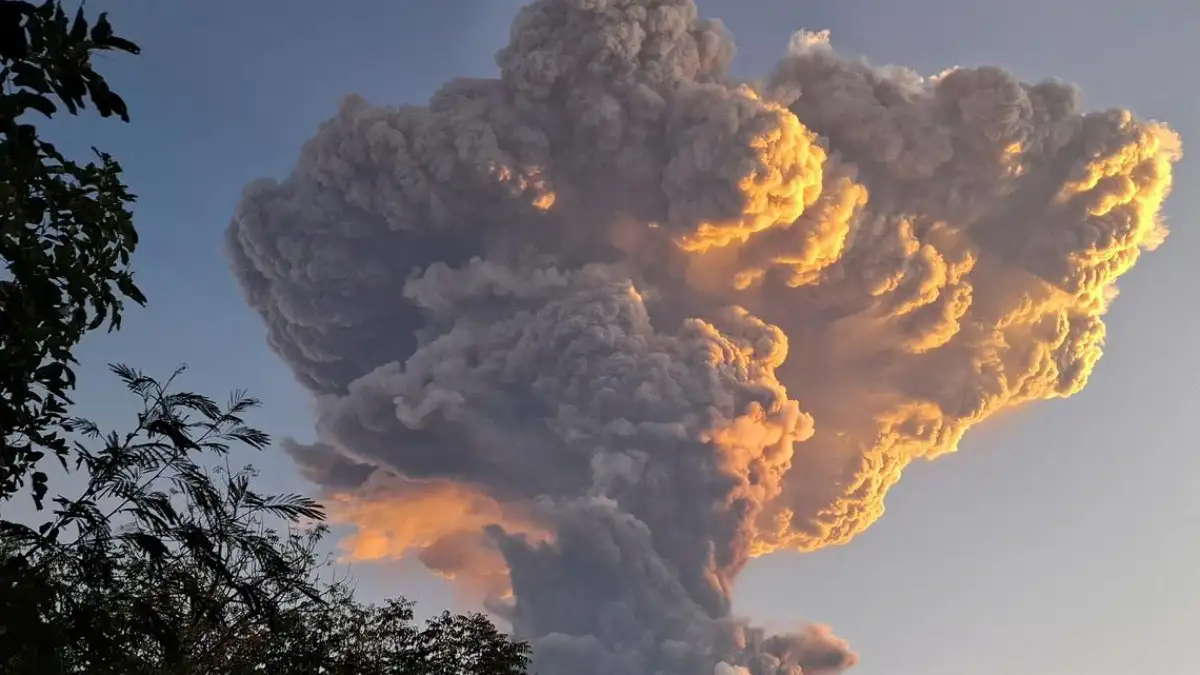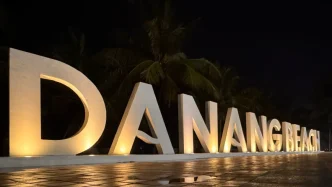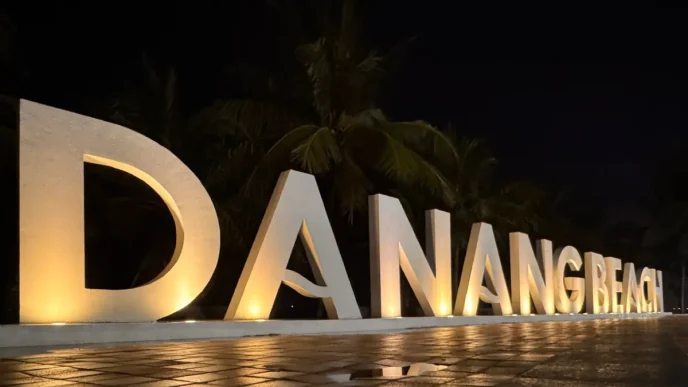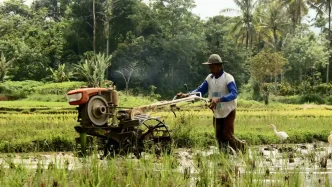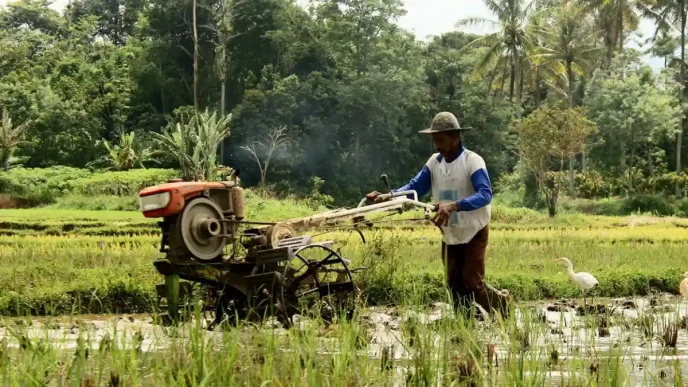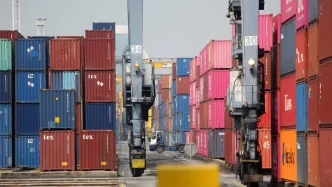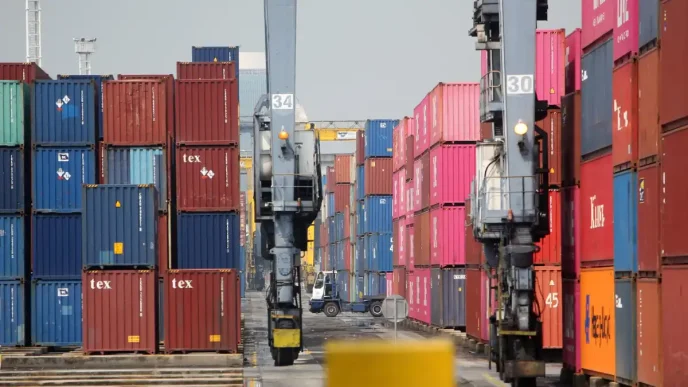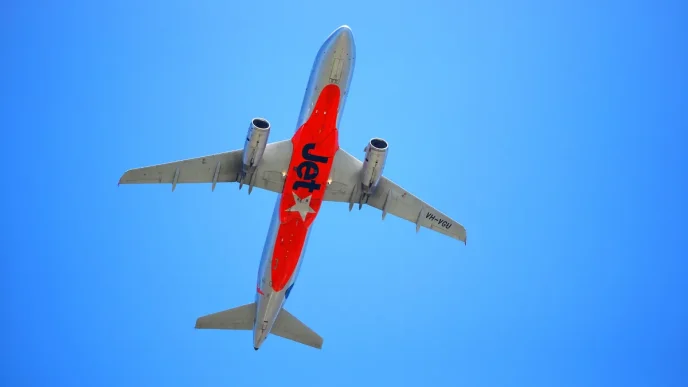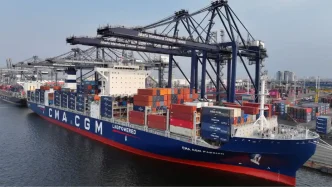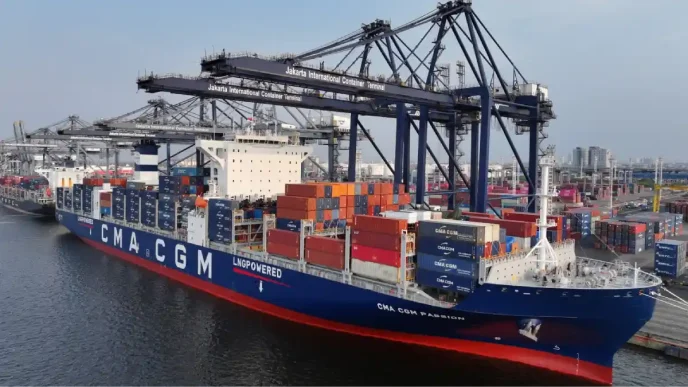A powerful eruption of Mount Lewotobi Laki-Laki in eastern Indonesia has sent an ash cloud soaring over 10 kilometers into the sky, causing significant disruptions to air travel, including flights to the popular tourist destination of Bali. The eruption, which occurred at 8:48 p.m. local time on Friday, is the latest in a series of volcanic events at the site on Flores Island, highlighting the ongoing risks posed by Indonesia’s position on the Pacific Ring of Fire.
Ash Clouds and Flight Disruptions
The eruption of Mount Lewotobi Laki-Laki, a 1,584-meter-high volcano, has once again brought chaos to Indonesia’s air travel network. While there were no immediate reports of flight cancellations following Friday’s eruption, the event follows a pattern of disruptions, including a significant eruption in July that delayed or canceled numerous international flights to Bali with an ash cloud reaching 18 kilometers. In the past few hours, over 40 flights across Indonesia have been canceled, affecting major hubs such as Jakarta’s Soekarno-Hatta, Surabaya’s Juanda, and Bali’s Gusti Ngurah Rai airports, as well as international routes to Singapore and beyond.
Volcanic ash poses a severe threat to aviation safety. When ash enters an aircraft engine, it can melt and adhere to critical components, potentially causing engine failure. It can also obstruct sensors, block cooling mechanisms within the turbine blades, and reduce visibility for pilots by damaging cockpit glass. The impact is akin to sandblasting the aircraft’s exterior, making it a significant hazard for any plane traversing an ash cloud.
Travelers affected by cancellations can expect refunds or alternative arrangements from airlines and tour operators. Many airlines will rebook passengers on the next available flight at no additional cost, and some may cover accommodation, meals, and communication expenses during the wait. However, without an official travel advisory from foreign governments, those who choose to cancel their trips to Bali due to personal concerns are unlikely to receive compensation, as this is categorized as a disinclination to travel.
Geological Triggers and Safety Measures
Indonesia’s geological agency reported that Friday’s eruption was triggered by a build-up of gas within the volcano over recent weeks. Muhammad Wafid, head of the agency, explained the phenomenon in a public statement, emphasizing the need for heightened vigilance. Authorities have urged residents and visitors to evacuate an area extending 6 to 7 kilometers from the crater and to remain cautious of potential mudslides, particularly if heavy rainfall occurs. Dramatic images released by the agency captured volcanic lightning illuminating the night sky and the fiery red glow of lava cascading down the mountain’s slopes.
Mount Lewotobi Laki-Laki, whose name translates to man in Indonesian, is paired with the taller and calmer Mount Lewotobi Perempuan, meaning woman, which stands at 1,703 meters. The volcano has been at the highest alert level since an eruption on June 18, which also disrupted air traffic. This year alone, Indonesia’s volcanology agency recorded 427 eruptions of the volcano, with notable events in March, May, and a deadly eruption last November that claimed nine lives and injured dozens.
The latest eruption propelled a column of grey smoke up to 18 kilometers into the atmosphere, blanketing nearby villages in ash. An avalanche of searing gas clouds, mixed with rocks and lava, traveled up to 5 kilometers down the mountain’s slopes. Thankfully, no casualties have been reported following Friday’s event, but the recurring seismic activity underscores the persistent danger for communities living in the volcano’s shadow.
Indonesia’s Volcanic Hotspot
Indonesia, an archipelago nation of over 17,000 islands, sits at the intersection of the Pacific Ring of Fire and the Alpide Belt, two of the world’s most seismically active zones. This unique geographical position results in frequent volcanic and earthquake activity, with around 130 active volcanoes dotting the country. Mount Lewotobi Laki-Laki is just one of many volcanoes currently under close monitoring by authorities.
The UK’s Foreign, Commonwealth and Development Office (FCDO) has not issued updated travel warnings specifically related to the recent eruption. However, it advises against all travel within designated exclusion zones around several active volcanoes, including a 7-kilometer radius around Mount Lewotobi Laki-Laki on Flores Island. Similar restrictions apply to other volcanoes such as Mount Sinabung in North Sumatra, Mount Marapi in West Sumatra, Mount Semeru in East Java, Mount Ruang in Northern Sulawesi, and Mount Ibu in North Maluku Province.
For tourists considering a trip to Bali, the question of safety looms large. While the island remains a top destination for its beaches and cultural heritage, its proximity to active volcanoes means travelers must stay informed about potential disruptions. Bali’s economy, heavily reliant on tourism, often feels the ripple effects of such natural events, with flight cancellations and travel hesitancy impacting local businesses.
Living with Nature’s Fury
For many Indonesians living near active volcanoes, eruptions are a part of daily life. Communities around Mount Lewotobi Laki-Laki have adapted to the constant threat, developing resilience through early warning systems and evacuation protocols. Yet, the danger remains real, as evidenced by last November’s fatal eruption. The balance between maintaining livelihoods and ensuring safety is a delicate one, often complicated by unpredictable weather patterns that can exacerbate volcanic hazards through mudslides and flooding.
The recurring eruptions also raise broader questions about disaster preparedness and infrastructure resilience in Indonesia. With millions of people living in close proximity to active volcanoes, the government faces the challenge of balancing economic development with risk mitigation. Investments in monitoring technology and public education are critical, but resources are often stretched thin across such a vast and diverse nation.
As Mount Lewotobi Laki-Laki continues to rumble, its latest eruption serves as a stark reminder of nature’s power and unpredictability. For travelers, residents, and officials alike, the focus remains on safety and adaptability in the face of Indonesia’s fiery landscape. Whether this event will lead to further disruptions or fade into the rhythm of life on Flores Island is yet to be seen, but vigilance is the order of the day.


